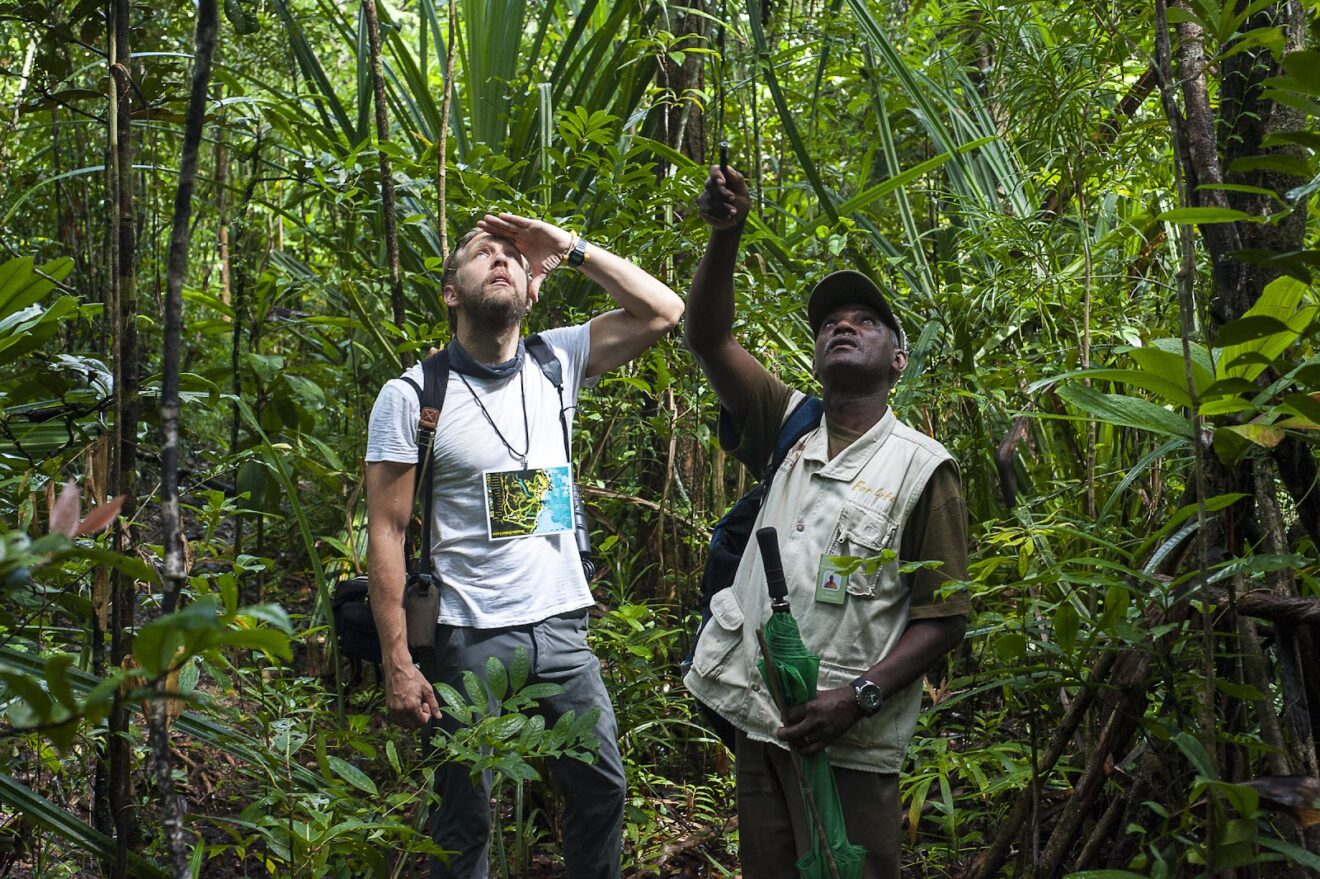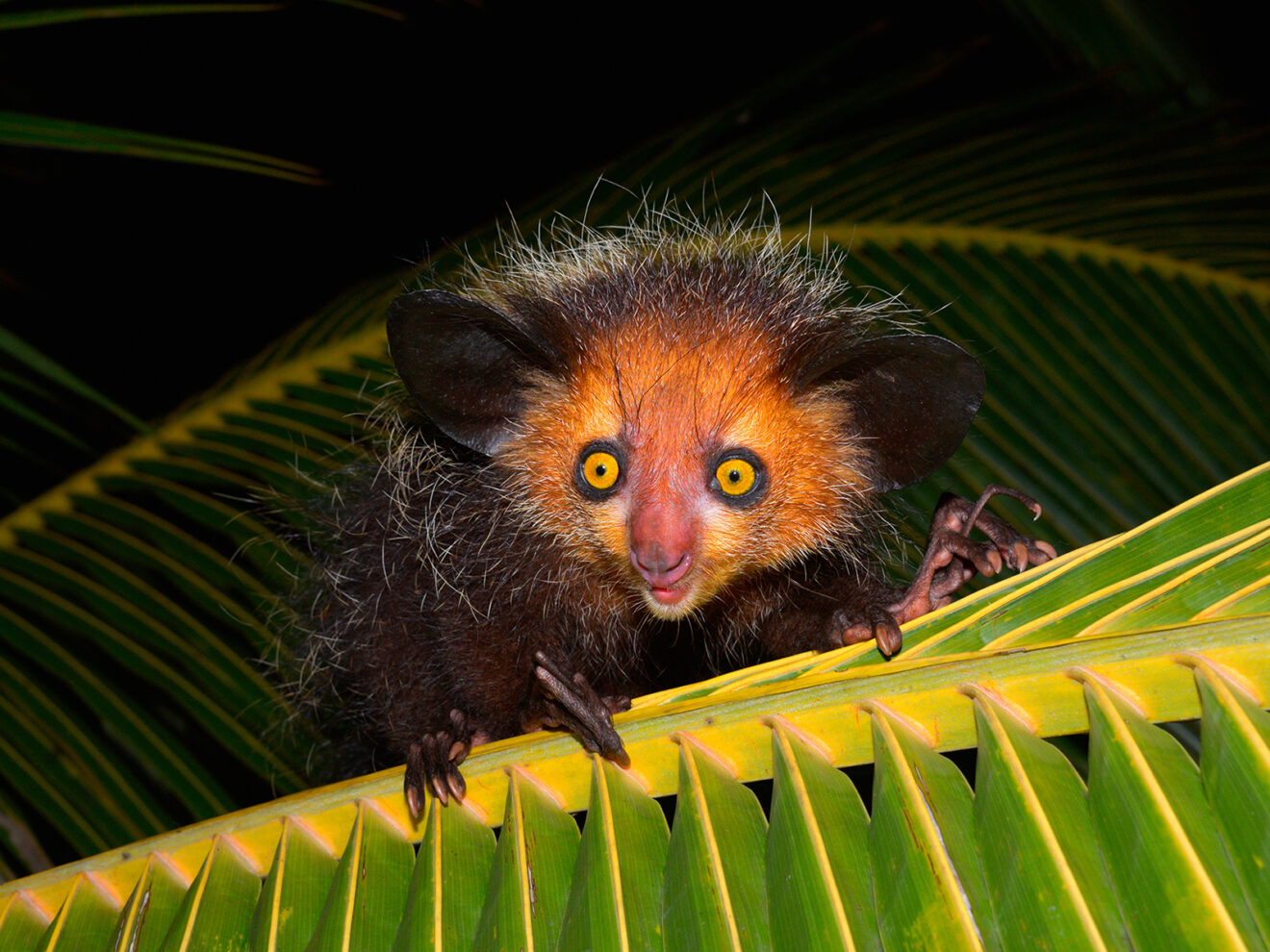An island in Antongil Bay, Nosy Mangabe has been a popular center for research since 1966 when several aye-ayes were released there. Groups of black-and-white ruffed lemurs and white-fronted brown lemurs were also introduced prior to this and are thriving.
Lowland rainforest (similar to Masoala) covers the 520 ha island. This has largely regenerated after considerable logging over two centuries ago. There are large buttress-rooted trees reaching over 35 m in height. Species typical for this type of forest include: Ravensara, Canarium, Ocotea, Fivus and Tambourissa. Tree ferns, ferns, epiphytes and orchids are also common. The island’s slopes rise steeply from the sea to the summit at 331 m.

Nosy Mangabe is a good place to see black-and-white ruffed lemurs, white-fronted brown lemurs and mouse lemurs. Sightings of aye-ayes were once regular, but are now far less frequent following cyclone damage to favored feeding trees. Also good for the greater hedgehog tenrec and Commerson’s leaf-nosed bat.
Birds are not particularly diverse or abundant at Nosy Mangabe. Madagascar paradise flycatchers, Madagascar bulbuls and Madagascar malachite kingfishers are common. There are sizable heronries around the shoreline including dark phase dimorphic egrets. On the coast rocks look for Madagascar pratincoles.
Nosy Mangabe is the best place in Madagascar to see the leaf-tailed gecko, which is common in Nosy Mangabe. It is also a good place to see the pygmy stump-tailed chameleons, panther chameleons, several day geckos and plated lizards. Frogs include green-backed mantella and Platypelis grandis.
The island lies 5 km from Maroantsetra – 30 minutes by boat. Nosy Mangabe is accessible all year round, but caution is advised in the cyclone seasons (January – March) as the sea can be very choppy. There is a well-maintained campsite behind the beach with sheltered tent platforms, a cold shower and toilets. There are some flat trails, but those which deviate from the shoreline are steep and can be very slippery after rain. A day trip from Maronsetra is possible, but at least one night camping is recommended as nocturnal walks can be so rewarding.

















